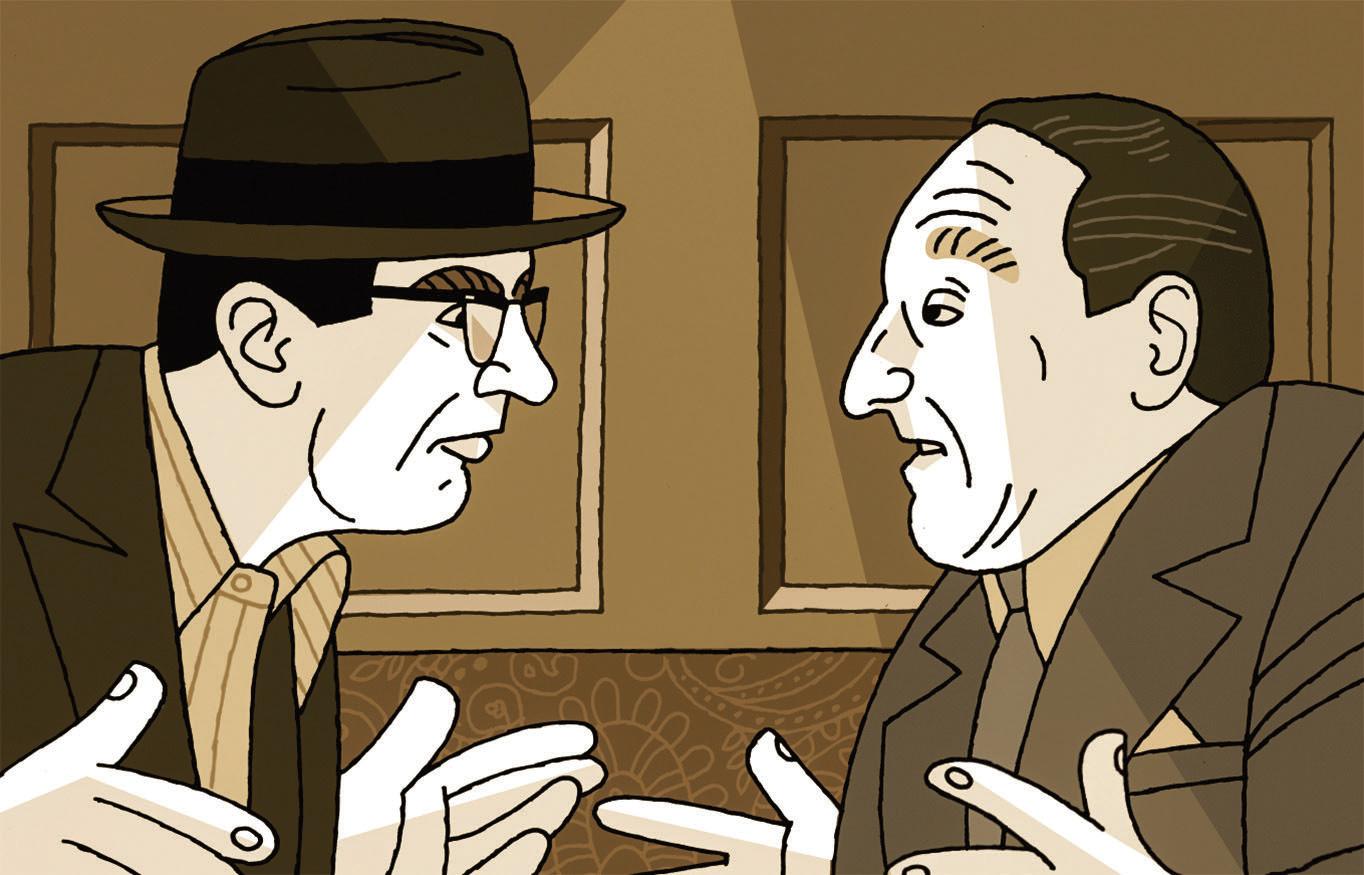CHORAL HISTORY

Robert De Niro plays two rival Mob bosses in Barry Levinson's film.
How might a mid-century New York City Mob boss spend his nights? Frank Costello, the acting head of the Luciano crime family, prefers to stay in, with his wife and their two adorable dogs. No guns and no molls, except the ones that pop up on TV, in a trailer for the 1949 gangster classic “White Heat,” starring a viciously leering James Cagney. (“It’s your kind of Cagney . . . in his kind of story.”) Vito Genovese, Frank’s sometime friend and longtime rival, is having a more eventful evening, overseeing the murder of his wife’s ex-husband. The violence is compounded by a redundant frenzy of crosscutting, double-underlining the difference between Frank, a man of domestic leisure, and Vito, a jealous and vengeful killer. The contrast is already night and day—or, rather, heads and tails. Both Frank and Vito, you see, are played by Robert De Niro.
This is the odd gimmick of Barry Levinson’s biographical drama “The Alto Knights,” his first feature in a decade. After working with De Niro in “Sleepers” (1996), “Wag the Dog” (1997), “What Just Happened” (2008), and the Bernie Madoff telefilm “The Wizard of Lies” (2017), Levinson has now cast him in a blood-spattered Mafia history lesson, unfolding in a wing somewhere adjacent to the director’s 1991 film, “Bugsy,” where Frank and Vito popped up in brief, surly cameos. The tribal codes and brutish hierarchies of Italian American Mob rule are well-trodden screen turf for De Niro; who’s to say whether he might ever tire of donning a fedora, sitting in vintage automobiles, or dropping jocular anecdotes and staccato expletives? It’s your kind of De Niro, in his kind of story, but with a high-concept twist.
This story is from the March 31, 2025 edition of The New Yorker.
Start your 7-day Magzter GOLD free trial to access thousands of curated premium stories, and 9,000+ magazines and newspapers.
Already a subscriber ? Sign In
This story is from the March 31, 2025 edition of The New Yorker.
Start your 7-day Magzter GOLD free trial to access thousands of curated premium stories, and 9,000+ magazines and newspapers.
Already a subscriber? Sign In

Hatagaya Lore Bryan Washington
We moved to Tokyo from Dallas because of my husband's job, an unexplainable tech gig.

A MATTER OF FACTS
On the loss of two sons.

OPEN SECRET
Why did police let one of America's most prolific predators get away for so long?

BEYOND THE CURVE
In medicine and public health, we cling to universal benchmarks—at a cost.

Richard Brody on Pauline Kael's "Notes on Heart and Mind"
When Pauline Kael joined The New Yorker’s staff as a movie critic, in January, 1968, the world of cinema was undergoing drastic change.

THE ELEMENTS OF STYLE, 2025
Reliable news coverage has never been more important than it is now. Journalists must remain vigilant and rigorous in the face of a second Trump Administration. To help them do so, we are releasing an updated version of Strunk and White’s “Elements of Style.” Please refer to the following examples when writing and reporting, for as long as that’s still allowed.

CHARACTER STUDIES
“Purpose” on Broadway and “Vanya” downtown.

DO YOU KNOW JESUS?
Why the Gospel stories won’t stay dead and buried.

HOME SLICE
The making of an Indian American specialty.
